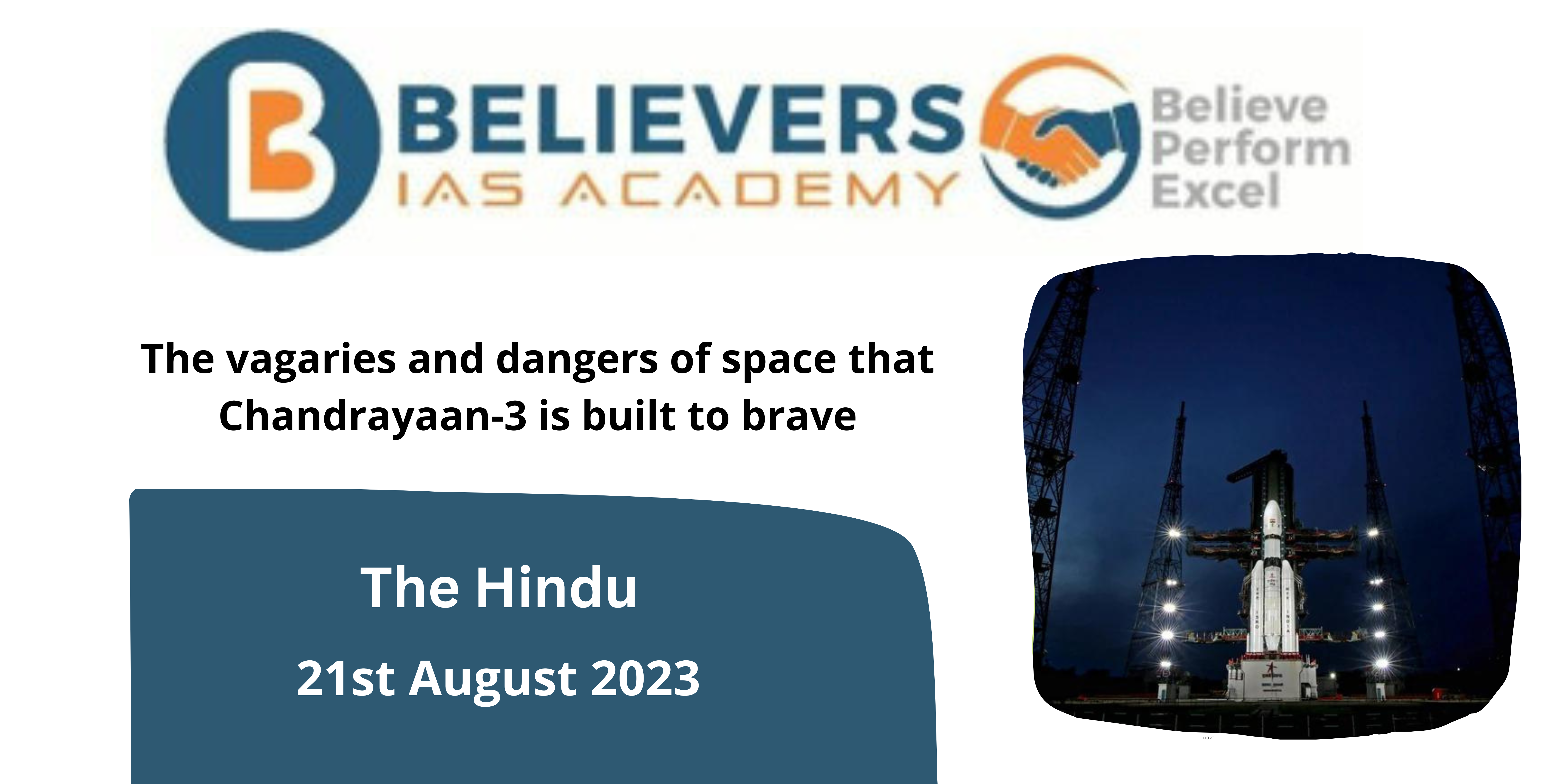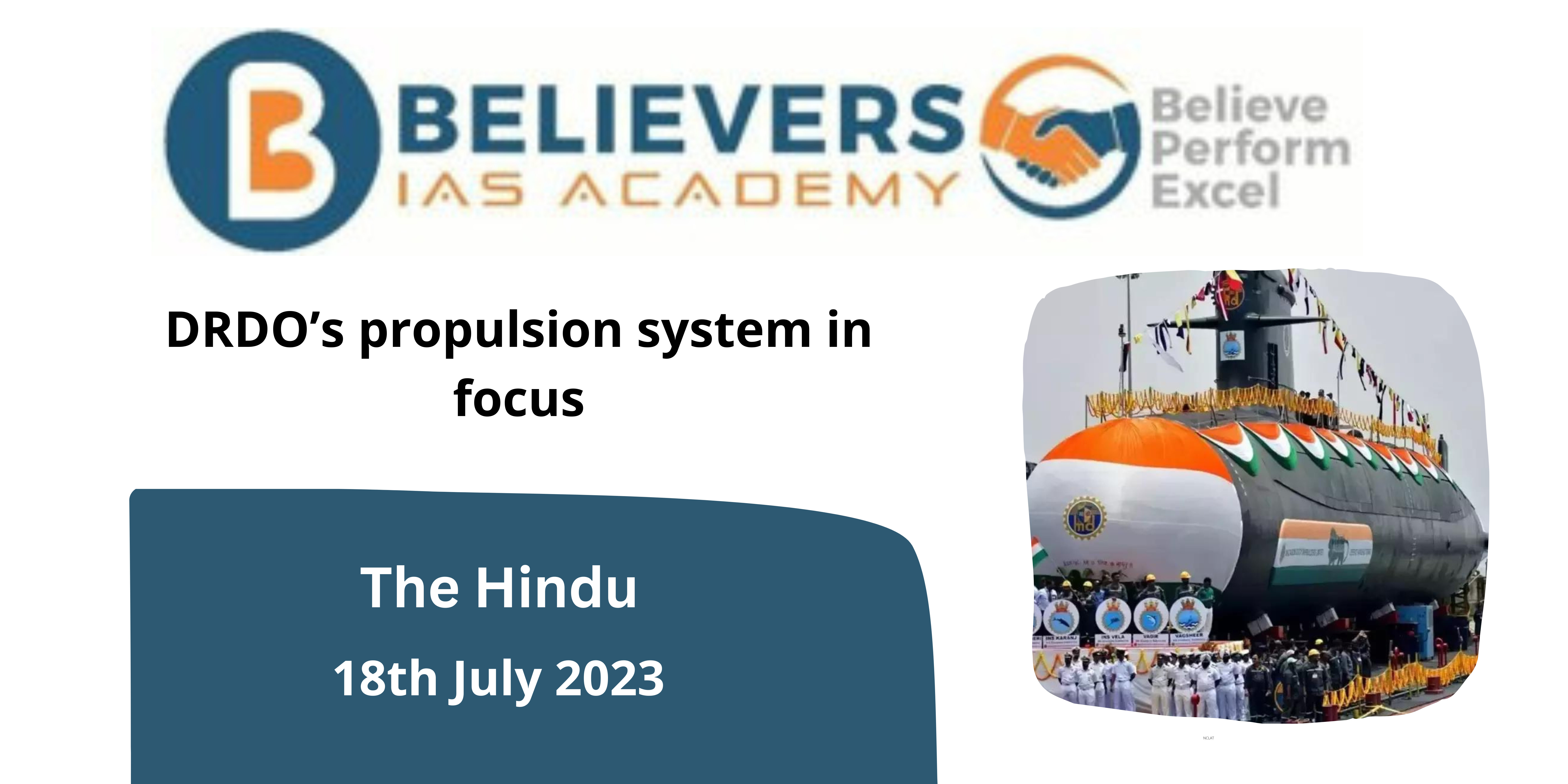The vagaries and dangers of space that Chandrayaan-3 is built to brave
Context
Despite the challenging nature of Chandrayaan 3’s mission, several efforts have been made to improve the likelihood of its success, including the design and testing of its instruments. Even a brief trip through space, such as one to the moon, requires the spacecraft’s needs to be balanced against the challenging requirements of spaceflight.
What is Chandrayaan 3?
- As part of the Chandrayaan program, Chandrayaan-3 is the third lunar exploration mission that was launched. It has the same parts as Chandrayaan-2, India’s second lunar mission, including the Vikram lander and Pragyan rover. It is noteworthy that Chandrayaan-3 is distinct from Chandrayaan-2 in that it lacks an orbiter.
- Relaying Communications via Satellite: Chandrayaan-3’s propulsion module acts as a satellite-based relaying communication system. This demonstrates that in addition to giving the spaceship thrust, the propulsion module also enables communication with the lander, rover, and Earth.
What are the challenges faced by Chandrayaan or any other space progaraame?
- The solar wind is the name for the intense charged particles that the sun releases.
- These particles are redirected toward the magnetic poles by the Earth’s magnetic field.
- The northern lights are a result of an interaction between solar wind particles and Earth’s atmosphere.
- Spacecraft are susceptible to the impacts of the solar wind because they lack natural defenses.
- Spacecraft equipment must be resistant to solar wind particles to prevent malfunction.
- Transients and displacement damage are two effects of solar wind
Radiation-Hardened Electronics:
- Engineers use radiation-hardened electronics to protect against solar wind effects.
- Multiple protective measures are incorporated during chip design, manufacturing, and packaging.
- Techniques include triple modular redundancy to counteract bit corruption.
Other difficulties in space
- Spacecraft must be able to endure rocket launch vibrations.
- In space, extreme temperature variations can harm equipment.
- Equipment performance may be impacted by outgassing due to vacuum conditions in space.
- Failures can be caused by unknown elements like metal whiskers, necessitating cautious material selection.
How does India’s space mission success portray the country’s growth?
- Innovation in Technology
- Chandrayaan 3’s successful launch, trajectory planning, and navigation show India’s proficiency in creating and utilizing cutting-edge space technologies.
- Innovative engineering solutions are demonstrated by the development of electronics that are resistant to radiation and safeguards against the impacts of solar wind.
- Cross-disciplinary Cooperation:
- Collaboration between numerous scientific, engineering, and technical disciplines is necessary for space missions.
- The combined efforts of scientists, engineers, mathematicians, and professionals from various fields are what made Chandrayaan 3 a success.
- Problem-Solving and Risk Reduction:
- Complex issues including radiation, vacuum, and severe temperatures must be addressed in space exploration.
- Our capacity to identify issues, create mitigation plans, and design resilient systems is demonstrated by our ability to address these challenges.
- Scientific Advancement:
- The mission’s objective is to carry out on-Moon research that will advance our knowledge of lunar geology, mineralogy, and other topics.
- The information gathered from such missions advances scientific research and human knowledge.
- Both domestic and foreign prestige:
- A country’s technological prowess and scientific accomplishments are positively reflected by the successful launch and operation of a space mission.
- It improves a nation’s standing in the international space community and shows its dedication to space exploration.




